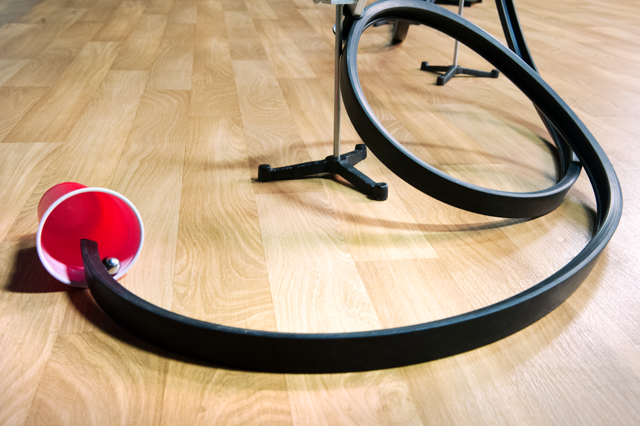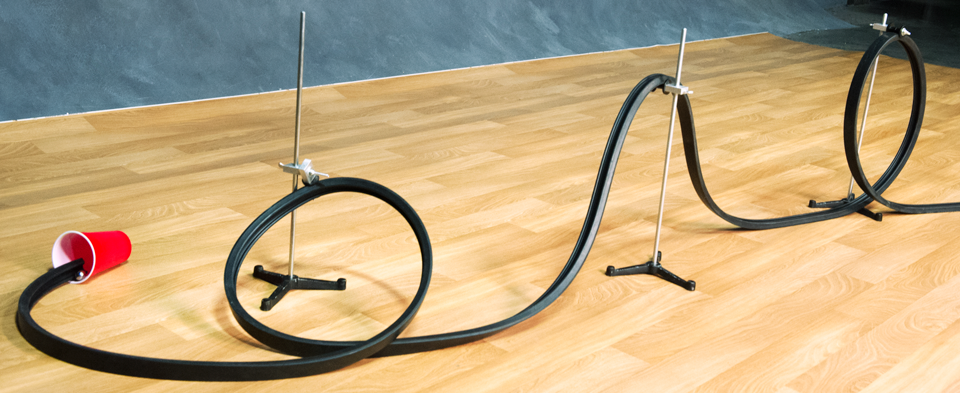Amusement parks enthrall us. There’s always something exciting happening in every corner of the park, from games and food to interesting characters and breathtaking rides, but one attraction can usually be found towering above everything else. It’s not hard to find. You can see it from a distance as you approach the park, and the screams of customers daring enough to ride it can be heard from miles around. Yes, I’m talking about the roller coaster.
Roller coasters are amusement park staples. The engineers behind roller coasters try to keep that perfect balance between thrills and not making riders too nauseated. Besides the thrills and motion sickness, there’s also a striking amount of physics and engineering involved with roller coaster construction. Gravity, potential and kinetic energy, and friction are all considered when making roller coasters. This makes them a great activity for students to learn about physics. You can use the Pitsco Roller Coaster Kit or our Roller Coaster Maker Project to build roller coasters in your classroom, but first, let’s take a closer look at roller coasters.
When you look at a roller coaster, it might be easy to think that they're engine powered. While some can be, most are powered with gravity. If you’ve been on a roller coaster, you’ve experienced the slow climb up that first big hill on the tracks. This crest is the highest point of the roller coaster. Usually a chain on the underside of the cars is used to pull the cars up to the top, and then the fun begins.
The first hill being the highest point of the roller coaster is very important. This is where all the energy for the ride originates. It might be easy to assume the cars lose energy throughout the ride after the tallest point of the coaster, but according to the law of conservation of energy, energy can be neither created nor destroyed (lost); energy is only transferred from one form to another.

When the cars are at the peak of the hill, they have the highest potential energy. As they race down the other side of the hill, the potential energy becomes kinetic energy, and gravity takes effect, speeding the cars along the track. Furthermore, while the cars are rolling along the track, the energy from the cars is transferred elsewhere because of friction. The friction of the wheels on the track causes the cars to lose speed, which is the reason the roller coaster can't go on forever without resetting.
After learning about the science of roller coasters, you can have students build them in the classroom. With the Roller Coaster Track Stands Package and the Roller Coaster Track, you can have students come up with their own designs and test them out. Even if you know how a roller coaster works, designing it is harder than it looks, especially if you want to include crazy features such as loops. Each part of the track must be thoroughly planned out so your marble stays on the track instead of careening off the sides into oblivion (like what happened in my first video).
When designing the track, be mindful of where the marble will have the most energy. For instance, after the initial drop point for the marble, you probably want something such as a large hill or a loop right then because if the hill is too small, the marble will fly off the track. There will be lots of testing and redesigning involved before you nail the perfect roller coaster, but that’s half the fun.
TOPICS: IN THE CLASSROOM, Middle School, IDEAS & INSPIRATION



